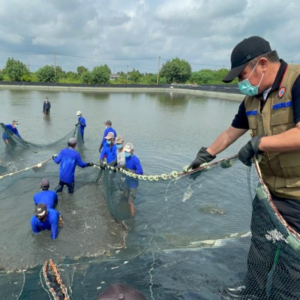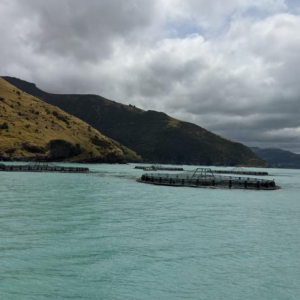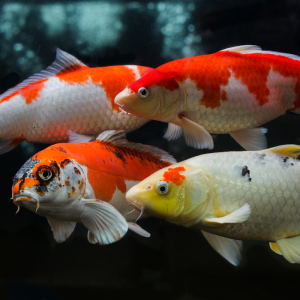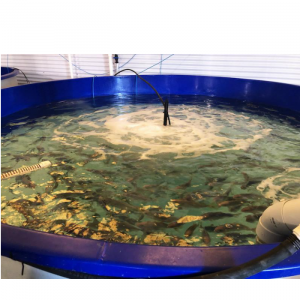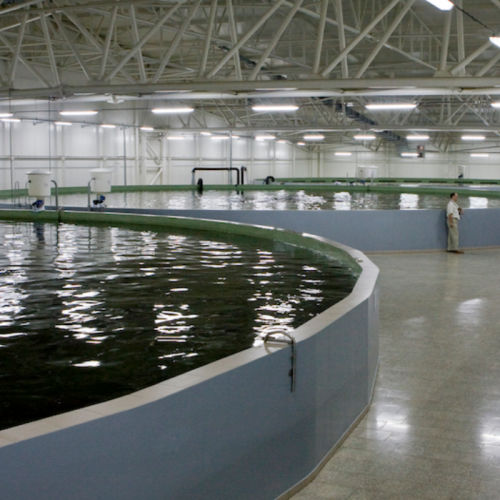
Lighting in Aquaculture Facilities
| Fri, 12 Mar 2021 - 12:12
Lighting is generally an afterthought in many facilities but it can make a pretty important impact on production.
When I was first starting out in the red drum hatchery, we were just using standard fluorescent lighting. While we were successful, it’s possible we could have capitalized on better lighting options. Of course, I was doing this work in the mid to late 90’s before the availability of more efficient fixtures, so I will use that as my excuse. Over the last decade, we have seen several significant advancements in lighting. One of the most prevalent is the LED (Light Emitting Diode) technology. LED’s allow a greater variety of spectrumor color-specific lighting and offer a completely new range of lighting options previously not possible with conventional lighting technologies. This column will discuss the different types of lighting and controllers that are available for use in our industry. From traditional fluorescent lighting to the more efficient LED, there are several options that are available.
Before delving into the types of lighting, it is important to review lighting in general. Lighting can be species and life phase specific. For example, brood stock lighting, in my experience, has been more about the time that the light is on than wavelength and intensity. Larval rearing has been more specific to intensity and in some research, it has been shown that wavelength can also affect fish growth.

One of the bigger hurdles in lighting is finding lights that are UL approved in wet conditions. While not every facility requires UL listings, it is common enough that it narrows the available fixtures significantly.
In general, the testing mechanisms existing for many lighting options are such that it is hard to guarantee specific “colors” so the most common description for a lamp is its Kelvin output. According to Reef Brite, a lighting manufacturer, the word temperature is important when discussing Kelvin because it refers to the temperature of a theoretical black body or to an emitting body of light in degrees Celsius when heated to a given temperature. Most of us are familiar with an incandescent lamp which has a filament (theoretical black body) made of tungsten. As current begins to pass through the filament it will begin to heat up. As the number of electrons (current) passing through the filament increases it will start to glow, producing light. If you were to measure the temperature of the filament and note the color it is glowing, you now have a fundamental idea of how color temperature (Kelvin) works.
Also read: Technology Solutions for The Aquaculture Sector
Lighting can be species and life phase specific. For example, brood stock lighting, in my experience, has been more about the time that the light is on than wavelength and intensity. Larval rearing has been more specific to intensity and in some research, it has been shown that wavelength can also affect fish growth.
We will cover the three most common types of lighting in this column. While there are other options available, it seems prudent to go with the more common options.

Fluorescent Lights
These are the most economical lights to purchase on the market, and they come in a variety of styles and sizes as well as wavelengths. Fluorescent lights are available virtually anywhere and can be installed quickly with standard outlets and switches. The most common is the T-5 lamp which is the newer version that replaced the T-8 and T-12 lamps. Fixtures for these are also available pretty much anywhere. Specific Daylight spectrum lamps are commonly available as well. Several brands of these lights allow the user to daisy chain the fixtures for easy installation.
One of the bigger hurdles in lighting is finding lights that are UL approved in wet conditions. While not every facility requires UL listings, it is common enough that it narrows the available fixtures significantly.
This style of light is relatively efficient but has specific disposal requirements since they contain a small amount of mercury. It also can lose its wavelength over time so if the wavelength is critical, plan accordingly. Each manufacturer has a recommended replacement timeframe.
Metal Halide
Lights These have been in use for many years. They were, and to a certain extent still are, the most popular for reliable wavelength and longevity. This style lamp often requires a pretty heavy ballast as well as quite a bit of energy. Luckily new electronic ballasts are coming into the market, which are lighter and smaller.
Also read: Power Move: Japanese Energy Firm Getting in on RAS Shrimp
Metal halide lamps work by passing an electric arc through vaporized mercury and metal halides. The intensity of the light is determined by the mix of the metal halides that are present in the lamp itself. There is a start-up time required which can take several minutes for them to be fully lit. As an example, traditional sport field and parking lot lights are metal halide lamps.
Metal halides are most often used in applications where plant or algae growth is needed. They are also used in coral and bivalve farms. They have a significant initial investment as well as high operating costs, so analysis needs to be done on the application to make sure they are appropriate.

LED Lights
And now on to the latest and greatest fixture in the market. As with all the latest and greatest gadgetry, one must be very careful not to be taken down the garden path of gimmicks. The race for better LED technology has been on for over a decade and we are finally seeing some of the low-quality materials fall out of the market.
LED stands for Light Emitting Diode. That said, this technology allows the manufacturer to control the wavelength of the fixture by choosing specific diodes. Really efficient and effective LED lamps can be extremely expensive. This is especially true if UL listing and large fixture sizes are required.
Also read: Farming Fish in the Sky
One of the biggest advantages to LED technology is that it is more focused because the light is only shone in one direction. While the fluorescent and metal halide lamps produce light along the entire filament, which is round, light from these sources that is initially directed away from the target must be reflected down.
The more commercial the fixture, the more expensive and more testing the unit has undergone to prove the technology. The good news is that in most aquaculture applications the specific wavelength is not as critical as it can be in other applications.
At the end of the day, the best possible option is to look at all the options and decide what is most effective for the species and system that needs the lighting.
What works for some facilities may not work in others, so this is one of the items that requires a lot of analysis.
Sumber: Aquaculture Magazine













